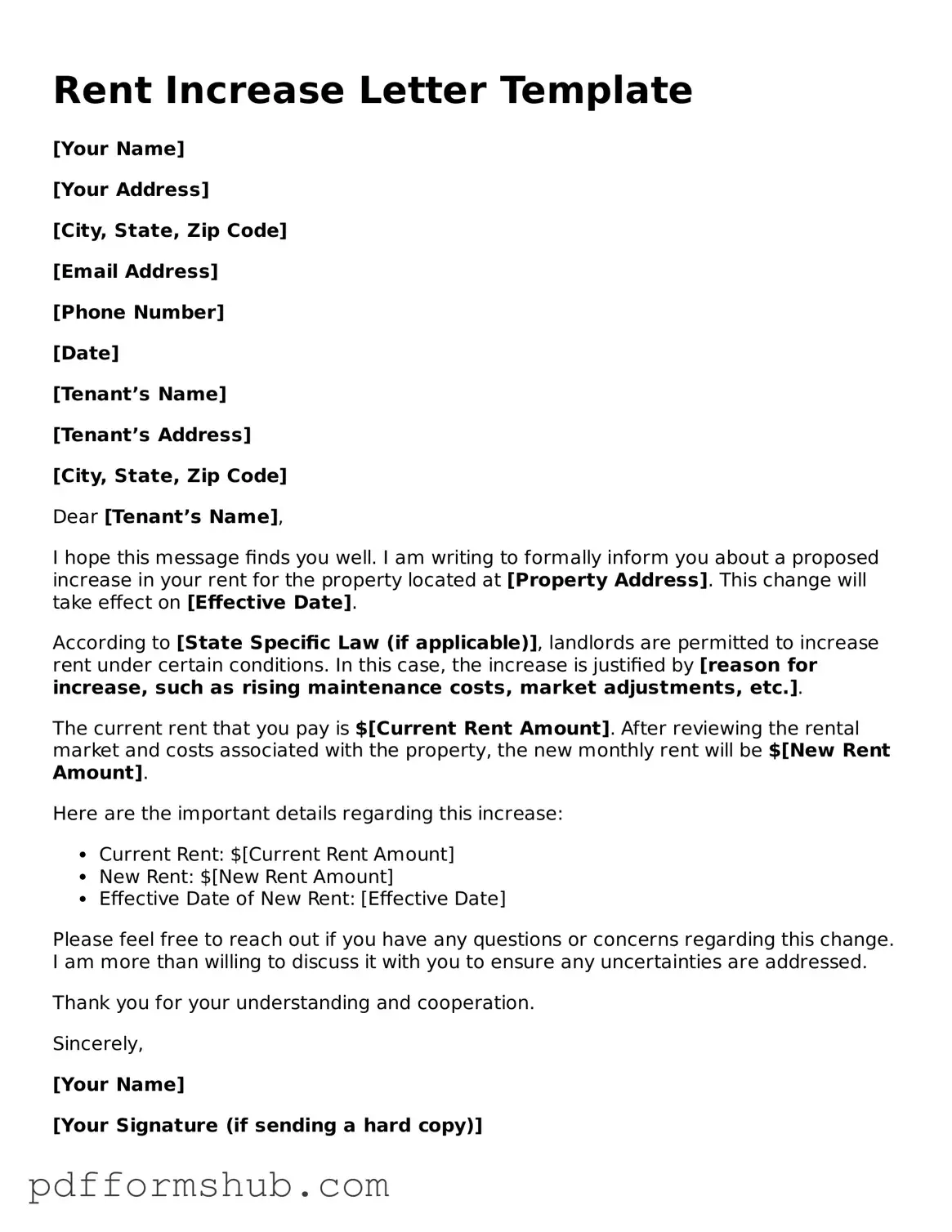Valid Rent Increase Letter Form
A Rent Increase Letter is a formal document landlords use to notify tenants of a change in rental rates. This letter outlines the new rent amount, the effective date of the increase, and any relevant details regarding the lease agreement. Understanding how to properly fill out this form is essential for ensuring clear communication and compliance with local rental laws.
Ready to get started? Fill out the form by clicking the button below.
Customize Form
